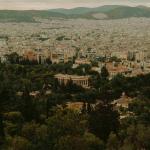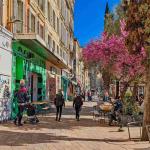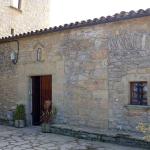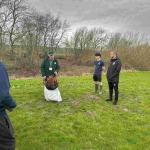Thessaloniki gets ready for its metro launch in November
The underground rapid transit lines have been under construction for almost two decades due to various project delays
 TheMayor.EU logo
TheMayor.EU logo 
The underground rapid transit lines have been under construction for almost two decades due to various project delays

The cross pinnacle on the Tower of Jesus Christ will be ready to receive visitors in 2026 on the centennial of Gaudi’s death

Now you can get your wine in Talence by paying directly in Bitcoin

That’s because the state has to spend money on updating the railway infrastructure rather than subsidizing the cost of the popular pass

Steffen Romstöck said that he would respect the residents’ choice and would take over the helm of the municipality, even if he didn’t run

The measure, which will come into force from 1 January 2025, will be partial and temporary…for now

Rethinking renewable energy sources for the urban landscape

But operating them is still illegal under the country’s legislation

The examples, compiled by Beyond Fossil Fuels, can inform and inspire communities and entrepreneurs that still feel trepidation at the prospect of energy transition

Now you can get your wine in Talence by paying directly in Bitcoin

Rethinking renewable energy sources for the urban landscape

The examples, compiled by Beyond Fossil Fuels, can inform and inspire communities and entrepreneurs that still feel trepidation at the prospect of energy transition

The underground rapid transit lines have been under construction for almost two decades due to various project delays

Plus, it has a unique modular design that allows it to be shortened and lengthened like a train

At least, that’s the promise made by the mayor of Paris, Anne Hidalgo

Despite its church-y name, the district has long been known as the hangout spot for the artsy crowds

At least, that’s the promise made by the mayor of Paris, Anne Hidalgo

Hostal de Pinós is located in the geographical centre of the autonomous region

On the eve of the new academic year, the ranking considers several distinct but essential factors


Following a successful trial phase, these quiet areas will now be available on all main routes in the country

The academic institution shows a deeper understanding of the well-being of its students











According to legend, Almoradi was founded by a king called Brigo in 1196 BC and was called Amarión. It was later settled by Greeks, Carthaginians, Romans and Visigoths. After this came the Arab occupation and it was the Moors who gave the town its present name (which means "my will and my desire"). Re-conquered for the Christians in the mid-thirteenth century by the crown of Castile, Almoradi came under the auspices of the town of Orihuela. Both were later annexed to the Kingdom of Valencia by Jaime II (James II) of Aragon. Almoradi became an independent town in 1586.
The great earthquake of 1829 (21st March) totally destroyed the town and it had to be completely re-built.
One of the towns of the Vega Baja (Low Fertile Valley) district of the southern Costa Blanca, Almoradi is situated on the northern side of the River Segura, close to Rojales and the smaller village of Algorfa.
Almoradi is a medium sized town with a population of approx. 19,000 (2011) and is part of the Communidad de Valencia in the province of Alicante. By distance it is 15 kilometres from Orihuela, 47 kilometres from Alicante and 195 kilometres from Valencia.
Over the centuries Almoradi has relied mostly on agriculture for its economic survival, although in recent times the manufacturing of furniture has also become an important industry for the town.

As with all Spanish towns and villages, Almoradi has its fair share of fiestas and festivals. These include the well known Moors and Christians (Moros Y Cristianos) festival held at the end of July.
Almoradi boasts a wide variety of shops, bars and restaurants and as well as a spectacular range of facilities. The town is somewhat quieter than many of its coastal neighbours and is becoming an increasingly popular location for foreign property seekers looking for a taste of traditional Spain.
Almoradi has a busy Saturday market which attracts thousands of visitors, looking for fresh produce and a bargain.
Plaza de la Constitucion, 103160 Almoradi